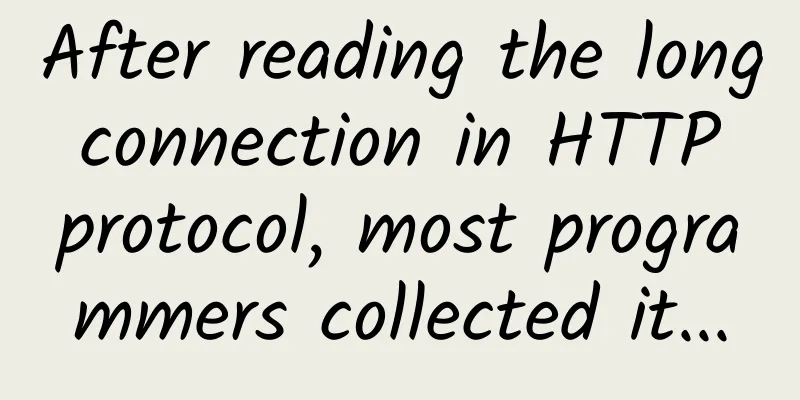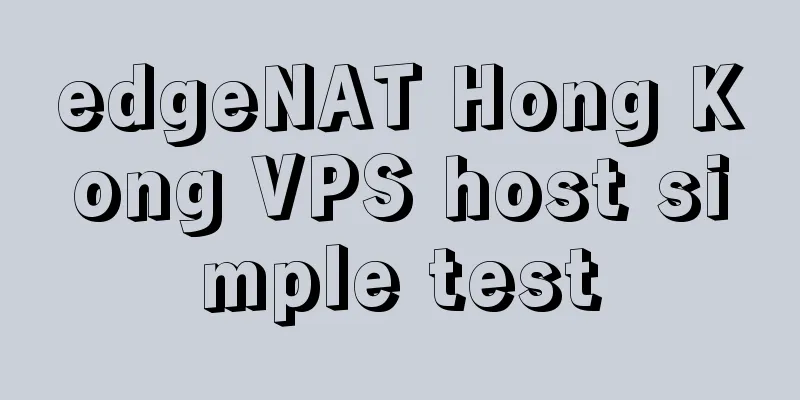Predictions from global telecom industry experts for 2024

Predictions from global telecom industry experts for 2024While 5G covers the world, artificial intelligence reshapes networks, and data centers change, the road ahead is still complex for telecommunications. Bridging the digital divide, preventing sophisticated fraud, advocating sustainable development, and cautiously adopting new technologies are all priorities for 2024. As generative AI takes over mobile devices, the world of the Internet of Things (IoT) proliferates, 5G adoption expands, and the foundations for 6G networks are laid, the telecommunications industry is expected to continue to accelerate and grow in 2024. However, despite these advances, the industry faces significant challenges. The virtualization of the telecom supply chain driven by OpenRAN (Open Radio Access Network Architecture), the lack of standards, the influx of big data, and the transformation of DevOps pipelines have put pressure on suppliers. In addition, as smartphones become digital treasures, the industry faces more and more attacks from cybercriminals and has set its sights on the mobile space. As 2023 draws to a close, some of the top telecom executives spoke to Techopedia and gave their predictions for how the telecom industry will change in 2024. The digital divide will narrow and widenAs the International Telecommunication Union (ITU) 2023 report shows, while the world has witnessed impressive technological advances, these advances have not been evenly distributed. An ITU report shows that although 67% of the world's population currently has access to the Internet, there are still 2.6 billion people who lack digital connectivity. In an interview, Ciena CTO Jürgen Hatheier talked about the human issues hidden behind connectivity. "We often associate the digital divide with broadband access, so closing the digital divide is about expanding access to high-speed internet, which in turn expands the global job market, content, information, and so on. That's only part of the problem." In the modern digital world, mobile connectivity is a hallmark of economic and social prosperity, intrinsically linked to financial opportunity and inclusion. Lack of internet access affects the most vulnerable sectors and groups in society around the world. Hatheier warned that the root cause of these socioeconomic disparities is related to the cost of technology products and services. "Access to affordable devices is another barrier to overcome. While a £100 smartphone may seem like a standard purchase for many, this exceeds the monthly income of billions of people, limiting their ability to connect and engage." Hatheier said the solution is not just to build the most advanced 5G networks, but to ensure everyone has choice in the market. "5G or LEO connectivity won't bring any benefits unless people can afford the right equipment to access those networks. Many companies in emerging countries have made their own cheap phones or cheap laptops that people can use, but there is still a lot of progress to be made." Hatheier added that by 2024, the digital divide will narrow in countries where governments invest in infrastructure, devices are affordable, and schools adopt digital education and include relevant subjects in the curriculum. If these factors are not met, the digital divide is expected to widen. Decentralization paves the way for green telecomAs mobile devices drive big data transfer, telecom networks are also transforming to accommodate the massive flow of information. With the rise of Open RAN, the legacy hardware and software that networks have traditionally used to operate are moving toward digitization and virtualization. But as Kristian Toivo, executive director of the Telecom Infrastructure Project (TIP), explains, this push for performance has sustainable effects. "The telecommunications industry is at a crossroads: it faces the challenge of meeting growing demand for connectivity while reducing carbon emissions." Toivo added that moves to open and disaggregate networks gained momentum in 2023, seen as enhancing vendor interoperability and diversity, achieving cost savings, and encouraging innovation. "However, the promise of lower energy consumption and reduced emissions will also make OpenRAN an attractive option for telecom companies seeking to meet their sustainability targets by 2024." "WLANs account for 73% of operators’ total energy consumption. By classifying them, operators can better manage their networks, address energy inefficiencies, and eliminate power-hungry legacy devices, paving the way for greener networks." Toivo believes that the increasing shift towards open and disaggregated networks will allow telecom companies to reduce their energy consumption by 2024. This will enable them to become architects of a more sustainable and interconnected world for future generations. Data Centers and the Rise of Edge and Micro Data CentersCiena's Hatheier added that network transformation and sustainability issues are also behind the rise of data centers and edge data centers. “A lot of the large data center construction is still going on in much of Asia and Australia.” “While growth has slowed slightly in North America and Europe, by 2024, we believe we will see the emergence of edge data centers, with operators preparing to peer across multiple locations rather than a hub.” Hatheier explained that new data centers and micro data centers at the edge of the network are emerging to reduce power consumption from the grid in central locations and improve sustainability. "India is a good example where a lot of data centers are powered by coal and the capacity per capita is only one-tenth of what it is in North America or Europe." "It will continue to be a global challenge for us to power data centers wherever non-renewable energy is available, and in locations with large, dense populations." The growth of AI will drive the need for smarter, adaptive networksAs businesses adopt generative AI and new telecommunications networks and require advanced AI for day-to-day operations, traditional networks are rapidly becoming obsolete and unable to provide the computing power required for the technology to run smoothly. Loudon Blair, senior director of strategy at Ciena, believes that technologies such as software-defined wide area networks (SD-WAN) can effectively respond to the dynamic needs of enterprises for artificial intelligence. "By 2024, SD-WAN, multi-cloud networking and Network as a Service (NaaS) will be positioned as key solutions in the business connectivity space, providing a software-centric approach to managing the WAN." Blair added that cloud-centric SD-WAN solutions offer an application-aware architecture that allows the network to intelligently adapt to the varying needs of various software applications, including artificial intelligence. "SD-WAN's ability to identify and prioritize traffic based on the characteristics of different applications lays the foundation for a more efficient and responsive network infrastructure that can meet current and future cloud and AI workload challenges." Text messages become scammers' new playgroundIn contrast, Katia Gonzalez, head of security and analytics at BICS, focused on more serious issues. Gonzalez said text messages are expected to overtake phone calls as one of the biggest threats by 2024, while artificially inflated traffic (AIT) targets businesses and end users. "These fraud schemes have become more aggressive and sophisticated compared to phone calls, making them particularly difficult to detect and stop. As with phone calls, the regulatory framework has simply not kept pace with the evolution of SMS and AIT." Gonzalez added that the industry needs to work together on a strategy by 2024 to stop SMS fraud and AIT. “AI/ML is an important piece of the puzzle, but it’s critical that operators invest the resources to train these models with the right, up-to-date data to effectively spot network anomalies.” Gonzalez believes that security challenges require collaboration. Global operators must share intelligence so that they can learn from each other's experiences. He warns that as long as the industry does not have a regulatory framework that allows machine learning analysts to access SMS content to prevent fraud, preventive measures will become obsolete. "It is in the interest of the entire ecosystem for operators to rise to this challenge and ensure telecom services remain secure and reliable. It is imperative that people regain trust in the telecom industry, otherwise operators risk losing customers." Artificial Intelligence: The CISO’s Role, Reliability, and the DevOps PipelineRob Robinson, head of EMEA at Telstra Purple, said as data points, endpoints and cloud edge deployments proliferate, chief information security officers (CISOs) will turn to AI to do more with less. "Today, the number of data points that security professionals are tasked with monitoring and managing is staggering. As cloud computing and intelligent edge deployments become more prevalent, this number will only increase in the coming years." Robinson is convinced that CISOs will take on more of a commanding role as AI takes off in cybersecurity. Beyond the hype, AI has potential because it is well suited to solving some of the security industry’s toughest problems, such as threat detection, classification and response, he said. “AI will not replace CISOs, but it will replace CISOs who don’t use AI. As CISOs continue to protect their organizations, we will see more AI-enabled solutions. As a result, by 2024, we will see AI once again change the necessary skills required of CISOs.” While no one can deny that AI will replace time-consuming and repetitive daily tasks, Sonatype Chief Technology Officer Jeff Wayman said AI is a double-edged sword. “AI cannot be relied upon for safety and will be spread with unvetted OSS (operational support systems).” While Wayman believes AI can complement security practices with the proper training and context, he also believes that enterprises cannot rely on AI to supplement these. “The rise of AI being included in everything but obfuscated by end users or consumers means we may see a similar situation with licensing, where consumers of OSS may not be fully aware of information security issues due to the inclusion of undisclosed AI components.” Peter Schneider, senior product manager at the Qt Group, also treads cautiously on the path of AI, explaining that using AI to speed up one DevOps process will inevitably lead to massive delays in other areas. “Coding itself is just one of many tasks to create a lovely product. While product localization, code documentation, and test generation will also be improved through GenAI, manual code review, code performance analysis, and other quality assurance tasks will become new bottlenecks.” Schneider added: “While generative AI has been lauded for its potential benefits to developer productivity, it is also prone to flaws and will inevitably shift bottlenecks in the DevOps pipeline away from programming and toward other areas.” “As enterprises generate more automated code and perform more testing for bugs and security vulnerabilities, hiring hundreds of coders is unsustainable. As a result, DevOps teams will have to automate a process that is not typically automated – software testing.” SummarizeWhile innovation and growth abound, telecommunications faces a tough road ahead as 5G goes mainstream, artificial intelligence transforms networks, and data centers continue to evolve. Bridging the digital divide, protecting networks from sophisticated fraud, and ensuring sustainable practices while safely adopting new technologies are priorities. In an industry where competition has always been the norm, the biggest obstacle is a change in mentality and business culture, as the tasks ahead require huge efforts, shared commitment and international cooperation. With the predictions for the telecommunications industry, leaders are ready to meet the challenges of 2024. They are working to build a more inclusive, secure, and interconnected world because it is the only way to stay away from potential dangers, risks, and threats. |
Recommend
I would like to say a few more words about this communication failure...
These days, everyone is paying attention to the ...
Deploy on demand: China Telecom plans to open 320,000 5G base stations in 2021
[[386510]] Today, China Telecom announced its ful...
spinservers: $69/month - 2*E5-2630Lv2, 64G memory, 1.6TB SSD hard drive, 1Gbps bandwidth, unlimited traffic
spinservers has released a special promotional US...
How to break the 100-meter transmission distance limit?
Local Area Networks (LANs) have historically been...
If the Internet connection becomes slow, you don't need to change the router and restart it to restore it to full health
When you use WiFi at home to surf the Internet, i...
EMR on ACK is newly released to help enterprises efficiently build big data platforms
Alibaba Cloud EMR on ACK provides users with a ne...
As the competition for 6G gathers momentum, can China continue to lead the world?
Globally, 5G network construction is in full swin...
Italian media: 5G will bring 210 billion euros in revenue to Europe
According to the latest research by research firm...
AlphaVPS: VPS hosting with large hard disk starts from €15/year, AMD EPYC/Ryzen starts from €2.99/month
AlphaVPS was founded in 2013 and is a leading Iaa...
How did Beiming Software and Huawei achieve new highs in cooperation performance?
[51CTO.com original article] In the context of th...
How 5G will drive drone technology forward
Ever since drones took to the skies, they have be...
Huawei focuses on intelligent scenarios in five major industries and releases new products in the F5G-A series
During Huawei Connect 2024, the All-Optical Summi...
5G technology and its impact on the Internet of Things
5G is the latest generation of cellular network t...
spinservers: 10Gbps high-end San Jose server, $109/month, dual E5 2650Lv3/64GB/1.6T SSD hard drive
spinservers is a site under Majestic Hosting Solu...
LOCVPS recharge 300 yuan in June and get 30 yuan, 20% off Hong Kong/Korea/US/Australia VPS monthly payment starts from 29 yuan
LOCVPS has launched this year's 618 promotion...









